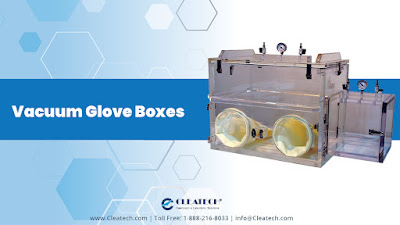Vacuum Glove Box Stainless Steel are used in laboratories for vacuum sealing of glassware.
Vacuum gauge boxes are SRC approved protective containers that are fitted with a top cover securely sealed with a fabric gasket sealer, which can be removed for fitting of glassware over the glass loading port. These boxes are made to AS/NZS 4589 - 2000 standards.
The construction of these boxes is Stainless steel 304 or Stainless steel 316L quality stainless steel. The vacuum panels are produced using the "Piano Clad" technology for ensuring tight joints resulting in fully satisfactory insulation ratings of these panels. This technology ensures that no vacuum leaks are possible at tight joints.
The panels are made by bonding two sheets of metal along each edge - this process results in reduced thickness of the panel, thus increased rigidity and surface thickness.
Benefits of vacuum glove boxes
The main benefit of using a vacuum glove box stainless steel is that it ensures that there is no moisture or oxygen in the glove box and that there is no exposure to contaminants.
The glove box can be used for long periods of time as the cover is air tight and can be easily resealed if needed. The cover of the box can be removed to load and unload glassware.
The glove box is easily cleaned as it has an opening at the top for easy access to the internal components. The opening in the lid of the box can be easily sealed with an airtight material such as duct tape.
When the lid is in place, it creates a sealed barrier between the glove box and the environment
Advantages of using vacuum glove boxes
There are a number of benefits of using a vacuum glove box.
- There is no need to use a special solvent to seal the box, which is a benefit as it saves on costs and time.
- The box can be used for long periods of time.
- The lid of the box can be used to load and unload glassware.
- The cover of the box can be removed to load and unload glassware.
- The box is easily cleaned as it has an opening at the top for easy access to the internal components.
- The opening in the lid of the box can be easily sealed with an airtight material such as duct tape.
How it can be used?
A vacuum glove box is a great way to prevent contamination of materials in a clean room.
For example, when you are running a fermentation, it is not ideal to have air being blown into the fermenter as it can carry contamination into the fermenter.
The advantage of using a vacuum glove box is that it ensures that there is no moisture or oxygen in the glove box and that there is no exposure to contaminants.
The box can be used for long periods of time as the cover is air tight and can be easily resealed if needed.
The cover of the box can be removed to load and unload glassware. The lid of the box can be used to load and unload glassware.
The box is easily cleaned as it has an opening at the top for easy access to the internal components. The opening in the lid of the box can be easily sealed with an airtight material such as duct tape. The opening in the lid of the box can be easily sealed with an airtight material such as duct tape.





